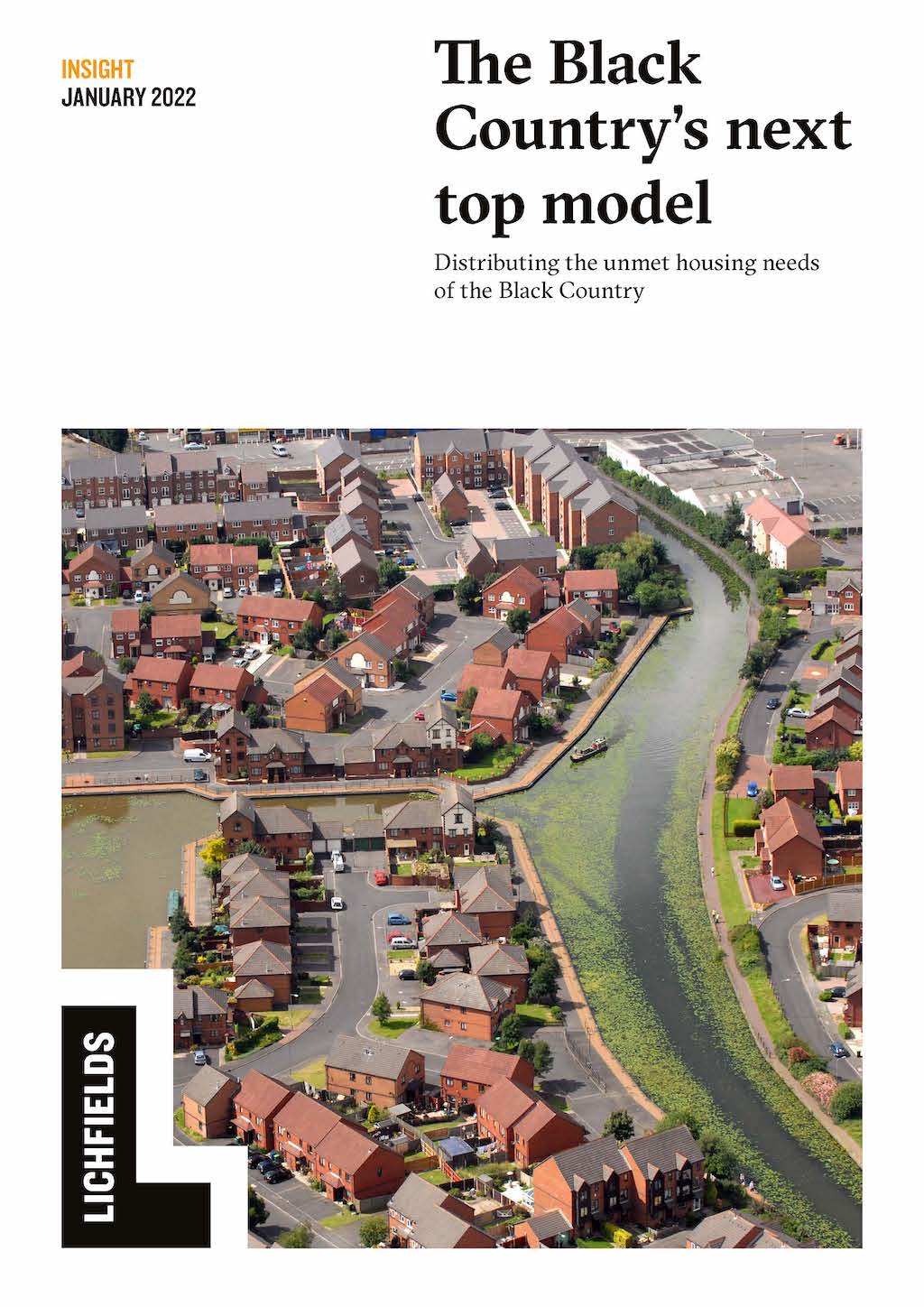
The West Midlands has successfully delivered housing across its urban areas over the last few years, utilising brownfield land supported by the targeted release of Green Belt land to assist in meeting the shortfall in new housing that arose from Birmingham up to 2031.
Despite these best efforts however, in the Black Country Authorities Black Country Plan Review consultation in 2021, it was confirmed that there is now a significant shortfall in housing land for the period up to 2039 arising from the Black Country, with nearly 29,000 dwellings needing to be delivered elsewhere.
While the region’s local plan reviews continue to grapple with these housing needs, it is becoming increasingly clear that the GBBCHMA, and even authorities beyond the housing market area, urgently need to ‘effectively deal’ with the matter rather than defer it, if the region is to meet the challenge of providing sufficient land for new housing.
In order to assist the question of where the identified housing shortfall should be located, planning consultancy Lichfields has prepared its ‘The Black Country’s next top model’ Insight report, which examines the unmet housing needs and strategic planning issues facing the Greater Birmingham and Black Country Housing Market Area (GBBCHMA).
The report calls for local authorities across the West Midlands to reconsider their contributions to sustainably allocate land where housing development can take place to meet these needs.
Lichfields, which compiled its report using publicly available data and mapping, says the region has suffered for too long with an ad-hoc approach to planning and the time is right to have a pan-regional, evidence-based functional relationship approach to solving the regions unmet housing needs. The report argues that this should include a more evidence-based strategy and a formal mechanism for allocating and distributing housing development.

Jon Kirby (left), Senior Director and Head of Lichfields Birmingham office, believes that planning policymakers should work together to make sure there is sufficient land available in the right location and said: “Crucially, if local authorities work together, and draw on an agreed evidence-based approach, we can then deliver the new housing needed within the region and create the places where local people will want to live and build communities.”
 Myles Wild-Smith (right), Associate Director at Lichfields Birmingham office and the report’s author, said: “The time is now for all involved in planning and housebuilding to have a full and frank conversation about how to tackle this issue. There is no single panacea to determine the proportion of unmet needs that LPAs should seek to accommodate from others.
Myles Wild-Smith (right), Associate Director at Lichfields Birmingham office and the report’s author, said: “The time is now for all involved in planning and housebuilding to have a full and frank conversation about how to tackle this issue. There is no single panacea to determine the proportion of unmet needs that LPAs should seek to accommodate from others.
“A formal mechanism needs to be reached to ensure that everyone is compelled to work together to meet the unmet housing needs of the Black Country promptly and any that potentially arise from the forthcoming review of the Birmingham Plan.
“An evidenced-based approach to distributing these needs amongst the authorities, perhaps one that is similar to the functional relationship approach adopted by other authorities, could actively assist in ensuring that this need is distributed sustainably.”
Lichfields report has used available evidence to identify the proportions of the housing shortfall that could be reasonably justified in being located in the adjoining GBBCHMA authorities, and even authorities beyond the housing market area, based upon the functional relationship with the Black Country.
The outcome from the report identifies those local authorities including Bromsgrove, Lichfield, Shropshire, Solihull, Stafford, Stratford-on-Avon, Telford and Wrekin, could accommodate between 1 – 13% each of the estimated almost 29,000 new homes that need to be built over the next two decades beyond the Black Country if the region’s chronic housing shortage is to be tackled.
Indeed, if the housing requirements in these places are not addressed it may either result in increasingly negative housing outcomes across the sub-region or force them to look elsewhere for places to live.
Founded in 1962, Lichfields offers a range of planning services including economics, heritage, sustainability, and GIS. Its clients include local authorities and government bodies, as well as developers, landowners and operators in the housing, retail, leisure, commercial, waste and recycling and infrastructure sectors.
A copy of the ‘The Black Country’s next top model’ report is available at https://lichfields.uk/content/insights/the-black-country-s-next-top-model








